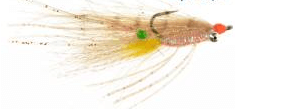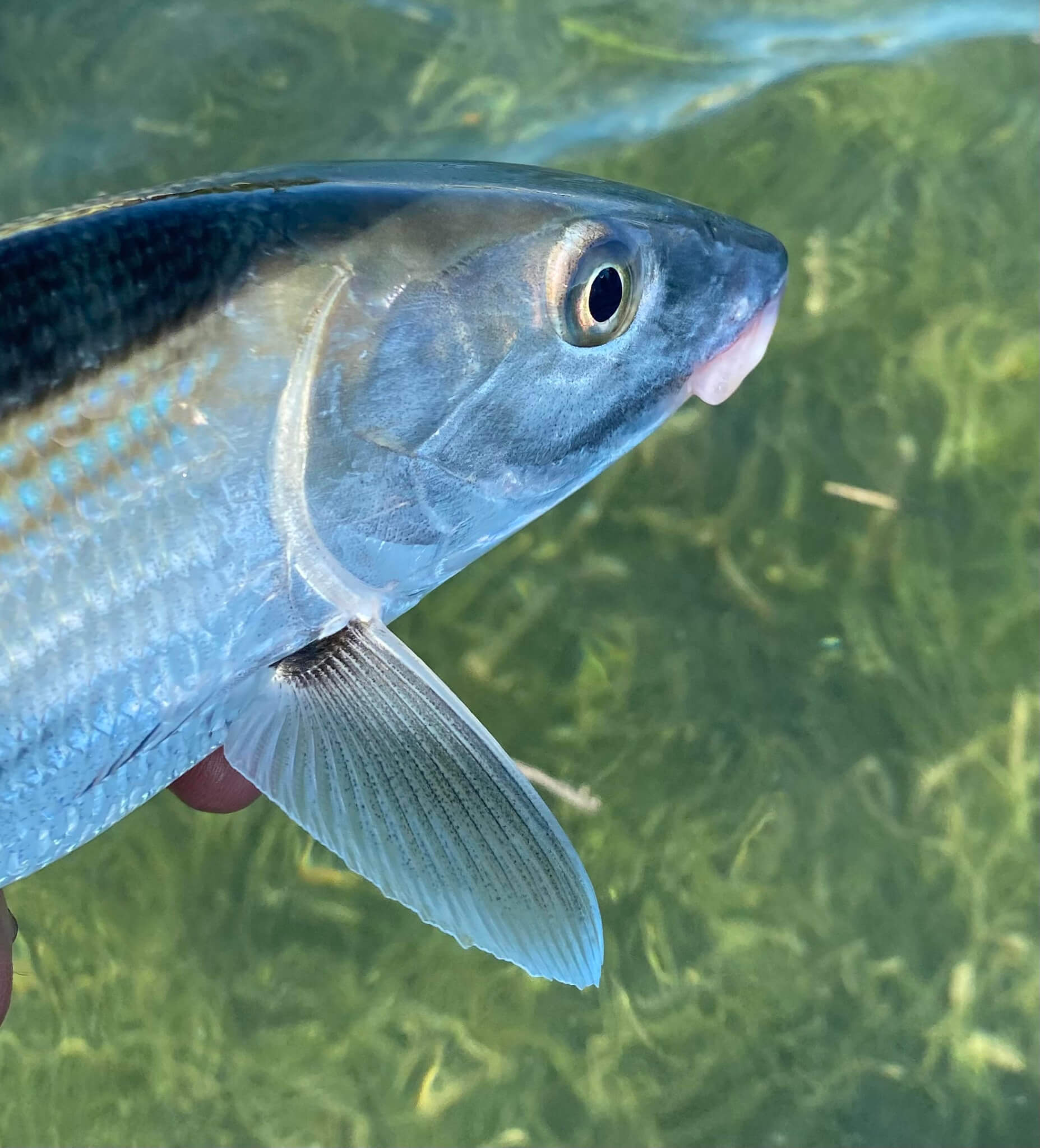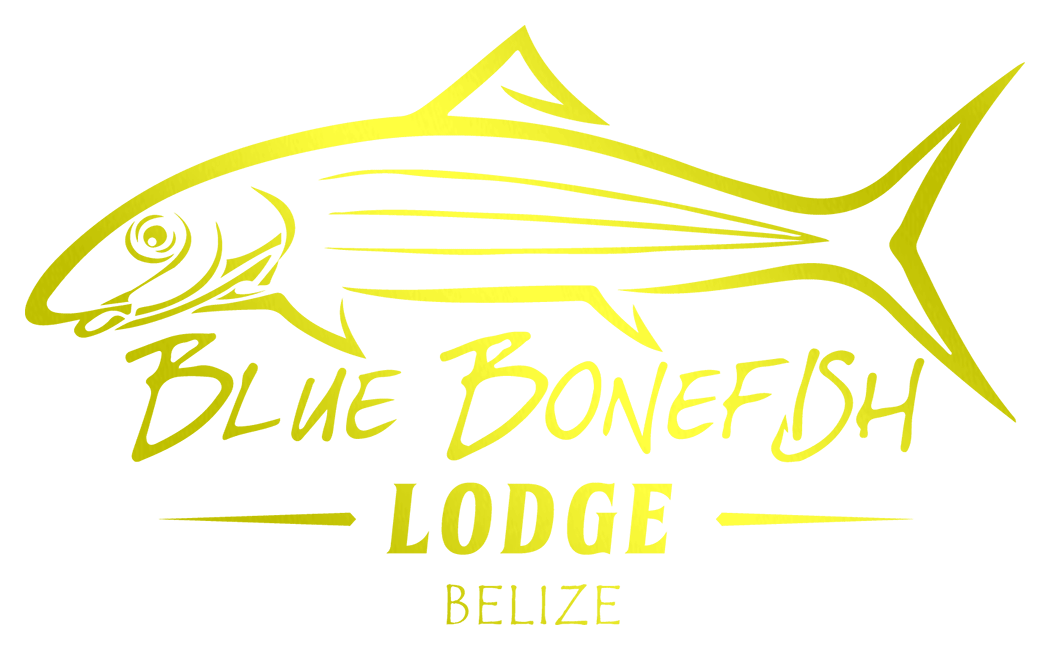Bonefish
Bonefish – The bread and butter of the flats. This is how you prepare for the big leagues. Even though they are the easiest to catch, our bones will still challenge the seasoned angler. Many shots at schools, as well as tailers ensure that nearly everyone can get their fill of bonefish here at Blue Bonefish. If you want a challenge, search out the big singles and doubles cruising the edges of flats. We definitely offer world class bone fishing here in San Pedro.
Catching all three of these elusive flats fish in the same day is known as a “Grand Slam”. The ultimate goal of the saltwater fly fisher. In many areas, this would be a once in a lifetime event. Here at the Blue Bonefish, we see a guest or two accomplish this great honor almost weekly.
The bonefish in Belize are plentiful and are not the pickiest of eaters but still will refuse a fly if it’s not the correct pattern. Like permit, a bonefish’s diet consists of shrimp and crabs, but since they are typically targetted in shallower water shrimp are the main patterns that anglers will use. Coming prepared with different sink rates and sized Belize bonefish patterns can be more important than a variety of specific patterns.

Spawning Shrimp – DiscountFlies.com
- Christmas Island Specials, (Tan/pink, tan/orange), size 6 and 8. A deadly and very generic bonefish fly pattern. The bead chain eyes allow the fly to drop in front of a feeding fish.
- Bonefish Bitters, (Tan, olive), size 6 and 8. Unlike other common bonefish patterns, the bitters have epoxy heads and elk hair. They are perfect for smaller schooled up feeding fish.
- Gotcha, (Tan, Pink, Orange), size 6 and 8. Another classic bonefish pattern that should be in every saltwater box in a variety of colors and sizes.
- Other patterns include the Mantis Shrimp, (Tan), size 6 and 8, EP Spawning Shrimp, (Tan/Orange), size 6, and 8, Squimp, size 6 and 8, Bonefish Clouser Tan/white, size 6, and 8, and Crazy Charlies, (white, pink, tan), size 6 and 8.
In addition to these three glamour species, fly fishermen can try for snook, barracuda, jacks, ladyfish, snapper, cobia, and triggerfish.
When To Come

There are two basic seasons in Belize. The rainy season, which is June – November, and the dry season which is December – May. The temperatures are less of a factor – only swinging by about 4 degrees C between summer and winter.
December – February is the best time to NOT be in the north, so almost by definition, it is also one of the best times to come to Belize. We do get the remnants of the cold fronts that move across the U.S. but by the time they arrive in Belize they have lost most of their teeth, usually bringing some clouds and wind, but leaving us with relatively warm temperatures. This is a great time for bonefish and permit, with a good chance to chase resident tarpon on the less windy days.
March – May is the best time for the serious permit fisherman to target large numbers. As the waters in the back country warm and the winds settle down, the larger permit seem to school up and cruise the extensive flats looking for food. Many of these schools host numbers in excess of 50 or even 100 fish. Still great bonefishing. The tarpon fishing gets steadily better through these 3 months.
June – mid August is tarpon migration time. This is when the big tarpon begin showing up consistently in good numbers, with some fish in excess of 100 pounds taken each summer. The often light winds of summer make it easier to find and to cast a fly accurately to the fish, no matter what species you choose to target.
Mid August – Mid October is the heart of the tropical storm season. On the days when the weather cooperates, the fishing can be fantastic for tarpon, bonefish and permit. When the rains are rolling through, however, the sight fishing can be tough. On those days, blind casting some of the finger flats leading to the reef can be deadly for BIG tarpon.
Fly Fishing In Belize

